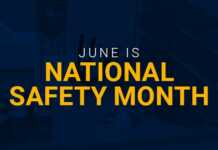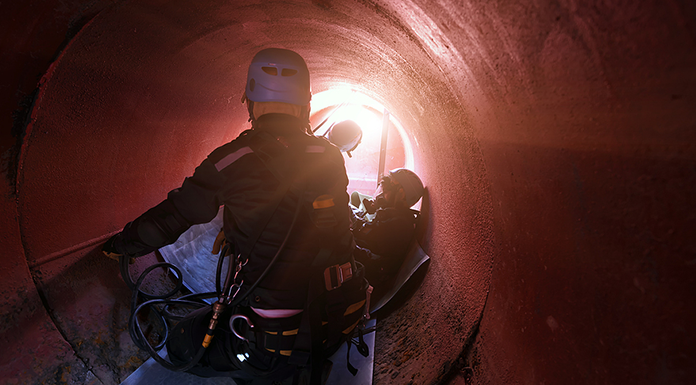Many workplaces contain areas that are considered confined spaces because they are large enough for an employee to enter and perform assigned work but are not designed for continuous occupancy and have limited or restricted means for entry or exit.
Confined spaces include water tanks, pits, grain silos, trenches, mechanical rooms, temporary structures, manholes, utility vaults, pipelines, and boilers. Employers need to inform exposed employees of identified spaces and their hazards. Here are safety practices to think about for working in confined spaces.
Hazards of Working in Confined Spaces
Confined spaces are not meant for continued occupancy but can be temporarily occupied to complete job tasks. According to the US Department of Labor, approximately 92 workers die each year in incidents related to confined spaces. Employees can be exposed to and overcome by poor air quality, radiation, toxic gasses, extreme temperatures, low oxygen supply, and structural deficiencies.
Training Requirements
According to OSHA, “The employer shall provide training so that all employees whose work is regulated by this section acquire the understanding, knowledge, and skills necessary for the safe performance of the duties assigned under this section”. Training needs to be provided to each affected employee in the following situation:
- Before the employee is first assigned duties
- Before a change in assigned duties
- When there is a change in permit space operations that presents a new hazard in which the employee was not previously trained
- When there are changes to permit space entry procedures
Employers need to document that training was completed. Documentation should include the employee’s name, signatures of the trainer, and training date.
Safe Permit Space Entry
Before entering a permit-required confined space, employers must complete training, establish a rescue plan and obtain a permit. Review, understand, and follow all employer procedures, including how and when to exit.
A permit-required confined space can have one or more of the following:
- Contain or have the potential to contain a hazardous atmosphere
- Have a material that has the potential to engulf an entrant
- Is designed internally so that an entrant could be trapped or asphyxiated by sloped or converting walls
- Contain any other recognized serious safety or health hazards. (ie. Unguarded machinery, exposed live wires, or heat stress)
A confined space rescue plan includes procedures for contacting rescue and emergency services, rescuing entrants, and ensuring unauthorized personnel do not enter the space and attempt a rescue. Evaluate a prospective rescuer’s ability based on the identified hazard and proficiency in rescue-related procedures and equipment operation. Train rescuers to perform basic first aid and CPR and assigned rescue duties. Provide the entrant with personal protective equipment, including retrieval systems.
Procedures necessary for safe permit space entry include the provision of the following equipment and personnel:
Equipment
- Danger signs posted for exposed employees informing them of the existence, location, and danger posed by the permit spaces
- Air testing and monitoring equipment to test for oxygen content, or toxicity
- Ventilation equipment for obtaining acceptable entry conditions
- Communication equipment, such as a two-way radio or phone
- Lighting equipment for employees to have adequate visuals for completing tasks and exiting the space quickly
- Barriers and shields at the entry to protect entrants from external hazards
- Ladders for entry and exit
- Rescue emergency equipment, including harnesses and retrieval lines. Authorized entrants must wear a chest or full-body harness with a retrieval line attached. The other end of the retrieval line must be attached to a mechanical device or fixed point outside the permit space
Personnel
- Identify entry supervisors and attendants
- The entry supervisor ensures that tests specified by the permit have been conducted and that all equipment and procedures are in place before allowing entry to begin
- At least one attendant should be outside the entry to monitor the permit space
- Each space must have its own attendant
- The attendant must remain on duty for the duration of the task being performed in the confined space until relieved by another attendant
- The attendant should not have any other tasks unrelated to the confined space entry
- The attendant must know the hazards that are faced upon entry, including signs, symptoms, and consequences of exposure
Need assistance with your Confined Space Program? ICW Group offers a Confined Space OSHA Program template that you can utilize to document your current policies. Use the Confined Space Program Audit to ensure your program is “Best in Class” and includes the required elements to protect your employees.

















